“At a time when painting was in crisis, eclipsed by the disappearance of major Viennese artists such as Klimt and Schiele,” wrote art historian Julia Secklehner, “regionalism seemed to offer an opportunity for rejuvenation and a different kind of involvement in modern art than the city.” the era is the one immediately following the end of World War I, the region is Tyrol, and the artist who succeeds in bringing new air into Austrian painting is the young Alfons Walde (Oberndorf in Tirol, 1891 - Kitzbühel, 1958), long regarded only as the painter of the mountains, the artist of sojourns in the snow, theman who forged with his paintbrush the image of vacations in Kitzbühel, the splendid ski resort known, now as then, for its mundane life, for its challenging slopes that are annually the scene of World Cup ski competitions (on the legendary Streif takes place the most beautiful downhill run in the world, while on the Ganslern the slalom champions compete). And indeed, it is impossible to separate Walde’s painting from the mountains, the skiers, and the lodges that the artist painted continuously until the end of his career: but he was also undoubtedly one of the leading figures in early 20th century Austrian painting.
Walde’s talent was expressed from a very young age: in fact, his first known works date from the time he was in school, and his first exhibition, held when he was just 20 years old at the Czichna Gallery in Innsbruck, was in 1912. By that time, Walde had already made a name for himself as a skilled landscape painter: the artist drew the subjects of his paintings from the nature and views he admired in his mountains, to which he would always remain faithful. Trained in the groove of post-Impressionist painting (Walde’s early paintings are akin to those of the Pointillists), he approached the painters of the Secession when, in 1910, he moved to Vienna to study architecture at the Technische Hochschule. The works of the 1910s thus experienced a significant change of direction and came close to the achievements of the paintings of Gustav Klimt (the Grabkreuz of c. 1912, kept at the Tiroler Landesmuseum in Innsbruck, is perhaps the work that comes closest to him) and Egon Schiele (see, for example, the portraits of the time). Walde soon entered Viennese art circles, so much so that in 1913 he exhibited at the 43rd Viennese Secession exhibition. The terse luminosity of Klimt’s works and Schiele’s strong tonal contrasts are legacies that Walde would make his own and rework to fine-tune an original style, destined to become especially evident when the artist in 1914 returned to the Tyrol (“Through Schiele I came to Klimt and his circle,” he would later state in a 1925 interview, “but what for them was art for me was something deceptive, so I realized it was time to return to the Tyrol.”). The stay in Vienna thus lasted just long enough for graduation: when this experience was over, Walde returned to Kitzbühel, from where he never moved again for the rest of his existence.
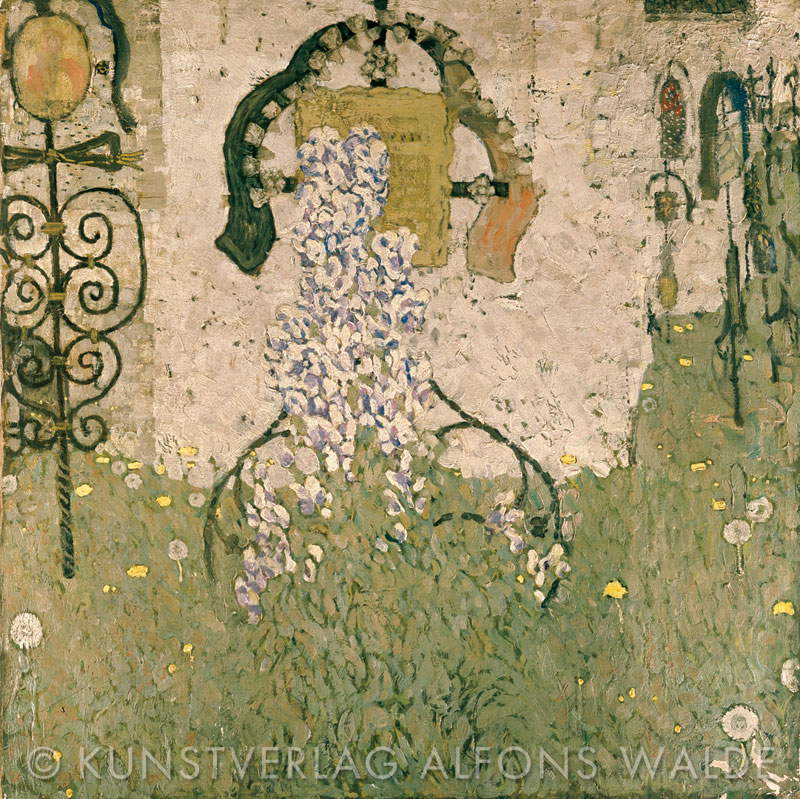
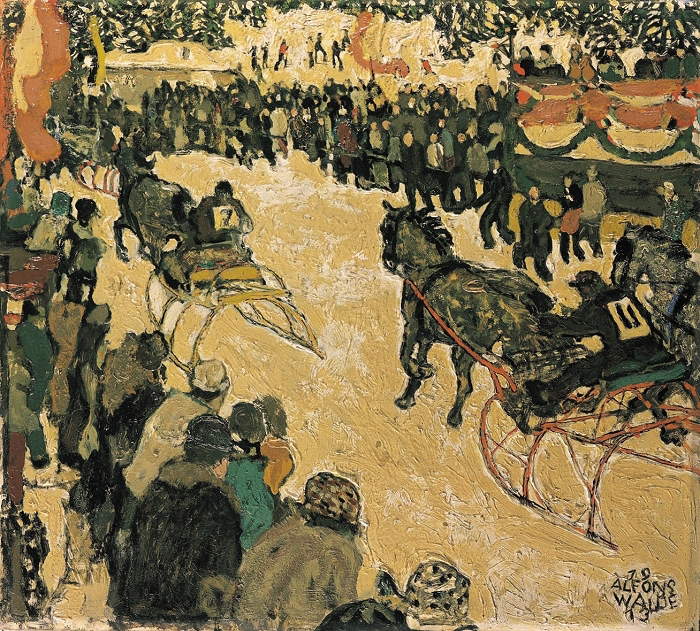
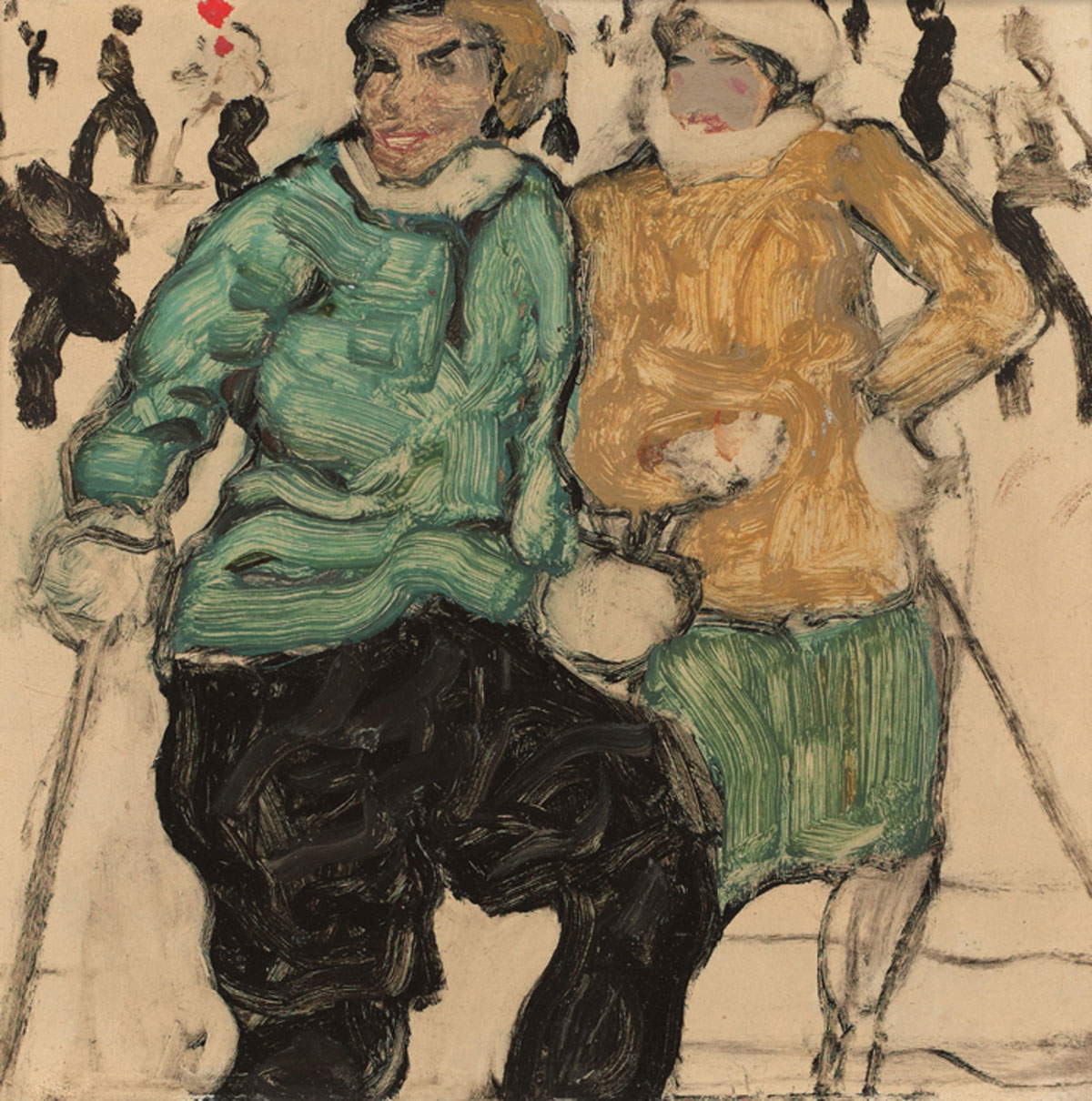


“The artist’s relocation,” Secklehner wrote, “coincided with a change in his painting practice, both in his choice of subjects and in his treatment of the canvas. Absorbing the formal experimentation of his Viennese years, Walde developed a distinctive style of broad brushstrokes and dense colors, creating flat abstract landscapes, always captured in the brilliant light of a clear alpine day.” For Walde,art had to be a mirror of the soul, and since the painter felt that he was “a natural, simple and genuine person” (so he wrote in his diary in 1917), his painting also had to be simple, and so did the subjects of his paintings. The return to Kitzbühel also coincided with the beginning of the Tyrolean town’s fortunes as an international ski destination: the slopes were being equipped with modern ski lifts, luxury hotels were opening one after another, the town was becoming more and more famous, and skiing an increasingly popular sport (Walde was also a skier). Kitzbühel’s tourist fortunes also meant Walde’s commercial fortunes, as he was able to sell his paintings to an international clientele (so much so that his works were also exhibited in major group shows abroad), but not only that: in 1923 the artist founded a publishing house specializing in postcards, which sold one million postcards and 200,000 color prints of his paintings in twenty-seven years of operation.
Walde has the ability to capture the essence of his native region in his works, which in turn rise to paradigmatic elements of Austrian identity. Walde’s winter landscapes depict glimpses of Kitzbühel and its mountains, or even excerpts of mundane life among the Tyrolean Alps as well as everyday life (the protagonists of Walde’s paintings are either mountain workers, such as farmers and lumberjacks, or wealthy tourists arriving from all over Europe), or skiers engaged in their activities. Walde’s style is based on extremely simplified forms that can be both soft and precise, on strong contrasts of light and shadow, and on a dense, mellow and very dry brushstroke. According to critic Fritz Karpfen, a scholar of kitsch (to which, however, Walde’s production cannot be traced: indeed, according to Karpfen Walde’s art is situated at the opposite end of kitsch) who devoted an article to the Tyrolean artist in 1924, his painting is “a mixture of Secession art, oriental colors, rustic engravings, a childlike and naïve feeling for composition, and acrobatic gestures like those of a circus.”
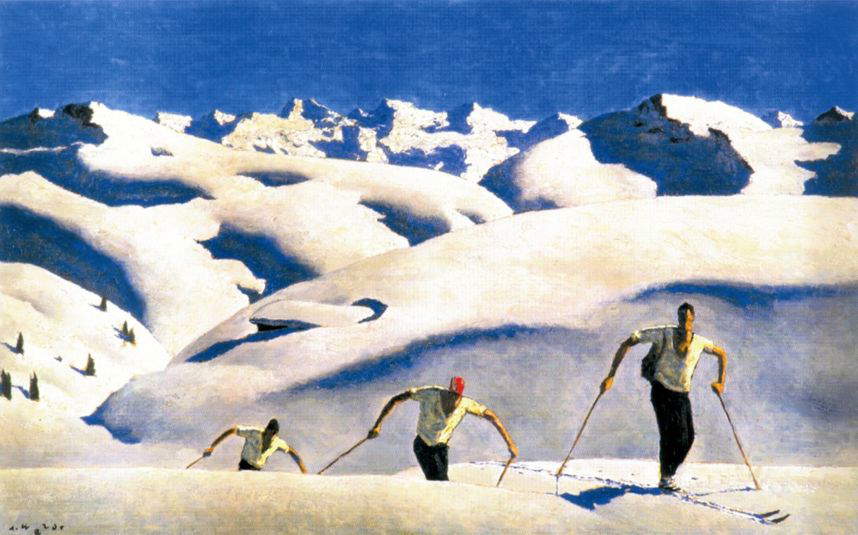


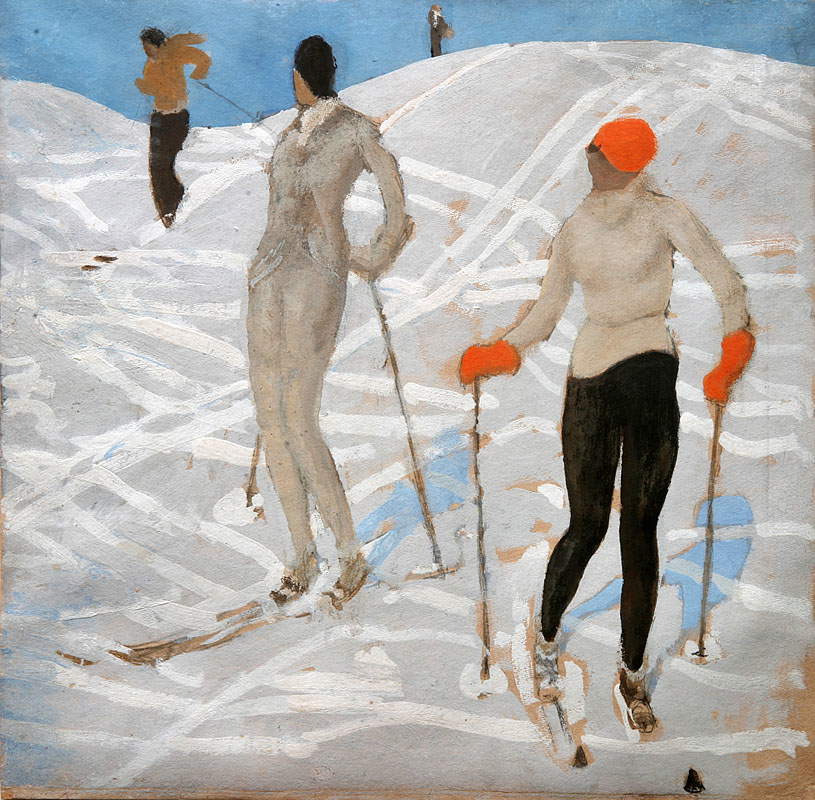
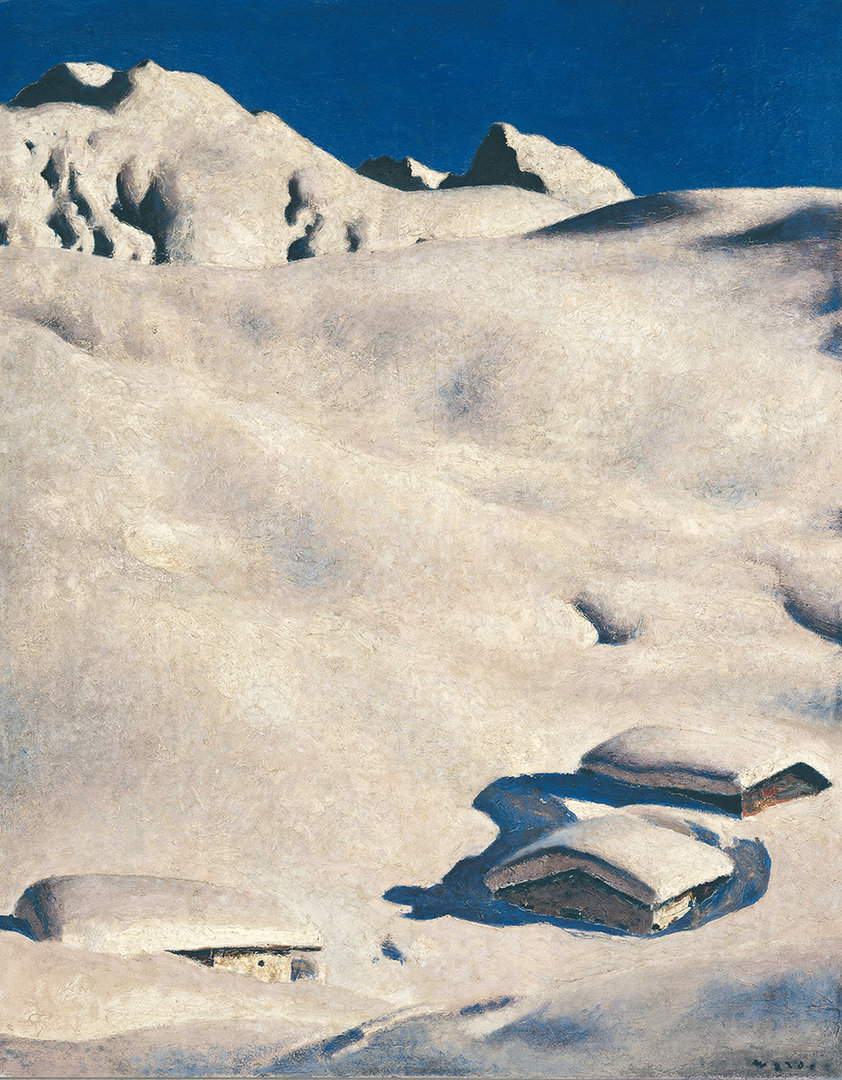
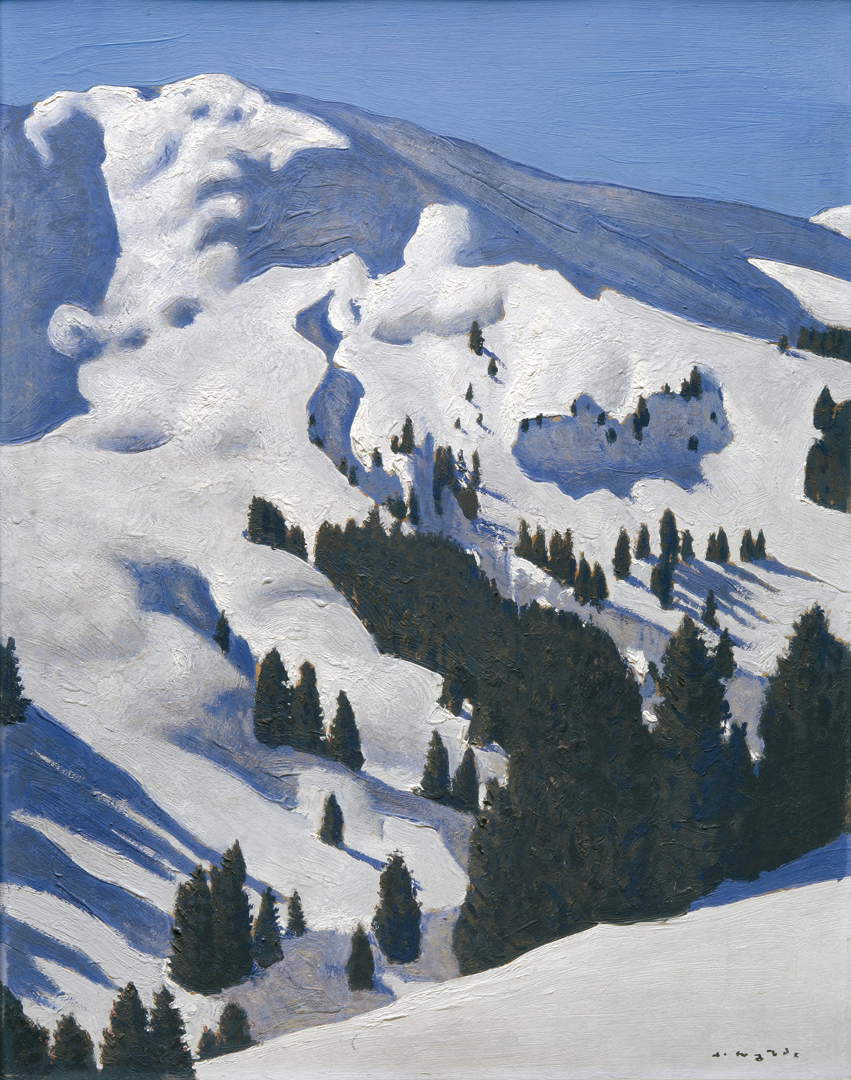
Walde, then, was able to employ an original style that was easy to understand and capable of combining different cues to offer the viewer a narrative of a precise moment inAustria’s history. The Oberndorf painter’s “regionalism,” Secklehner wrote further, “offered a strong sense of continuity between traditional rural life and modernity, further reinforced by the way he observed human figures embedded in the Alpine landscape.” Walde’s Alps are a place where its inhabitants, caught mostly in moments of repose (they are mostly men, who in their often magnificent and classical poses become almost bearers of the ideals of pride, strength and resilience to adversity of the mountain peoples), they rise as role models for all Austrians, and the Tyrolean Alps themselves become the national landscape par excellence, an example even for city dwellers who find in the mountains the symbol of their sense of nationhood. To this end, Secklehner points out, Walde’s simple style is also functional: his “reduced visual language follows the idea of mountains as social equalizers. By projecting a classless society in which man has only to deal with nature, the artist fits into the groove of the Romantic desire for the countryside, which was central to the Tyrolean tourist imagery and reinforced the notion that the new Austrians were nature-loving, devout and strong Germans.” A painting that, moreover, found itself accompanying the aspirations of the new Austria, that is, of the Ständestaat regime that arose from the ashes of the Austro-Hungarian Empire and aspired to build a modern state but firmly rooted in traditional values. It is later known how that turned out: the period of the National Socialist regime was also particularly troubled for Walde, partly because the artist was critical of it, and partly because the Anschluss caused him to miss the international clientele that frequented Austria before 1938, causing him considerable economic damage.
In Walde’s canvases, however, tradition and modernity are two worlds that brush against each other but do not mingle: the role of Tyrol as an authentic region, as a region where the purest values of tradition still existed (an idea that, in the age of the return to order, thus found easy channels to impose itself on the artistic and cultural level as well) is affirmed, and the tourism promotion of Tyrol at the time also revolved around these characteristics of the region. No longer then, an isolated region in the heart of the Alps, but a place projected toward the future and modernity while preserving its values. A new era without the rejection of the past. And then, thevery image of the Tyrol: Walde’s colors and shapes have entered the collective imagination, partly because the artist did not aspire to provide narratives, but intended to arouse impressions in the relative. And those colors so intense and that light so clear have become proverbial: it seems that even today, among the inhabitants of the Tyrol, they still say “So ein Tag mit Walde-Schnee und Walde-Himmel” (i.e., “A day with snow and sky from Walde”) on the most beautiful days of winter.
A very substantial core of Alfons Walde’s works is now preserved at the Museum Kitzbühel, which tells the story of the town and the area from the Bronze Age to the present day, culminating with the epic of skiing and winter sports. The Walde core consists of some 60 paintings and about 100 graphic works. To see Austria’s skiing and snow capital up close through the eyes of the great painter.
To learn about Kitzbühel and Alfons Walde, a painter closely associated with the famous ski resort, you can visit austria.it
Warning: the translation into English of the original Italian article was created using automatic tools. We undertake to review all articles, but we do not guarantee the total absence of inaccuracies in the translation due to the program. You can find the original by clicking on the ITA button. If you find any mistake,please contact us.